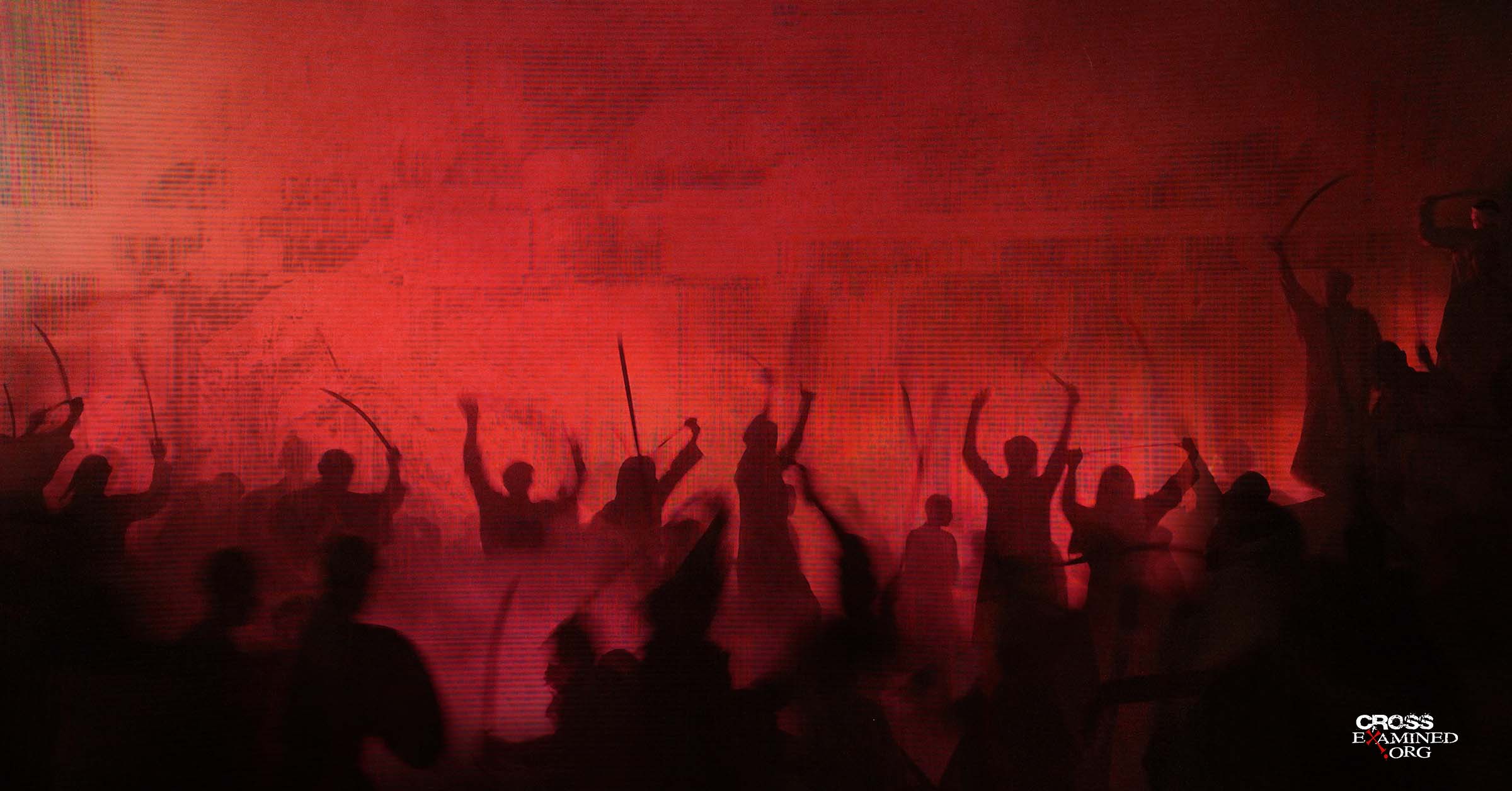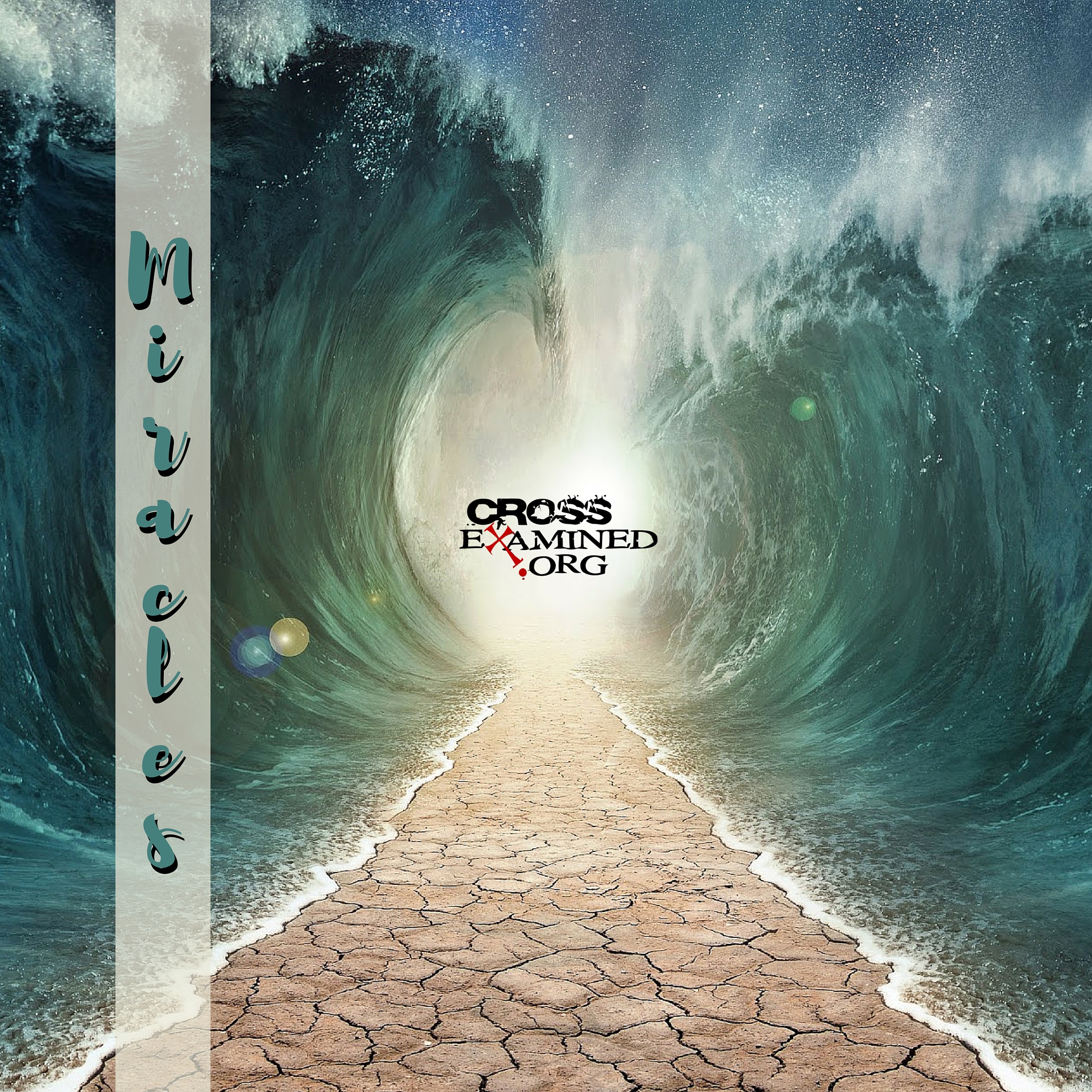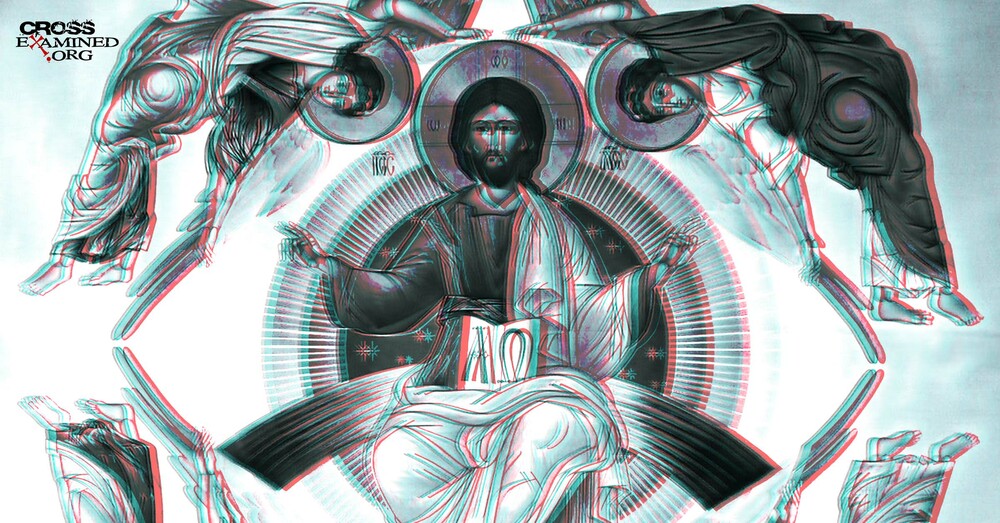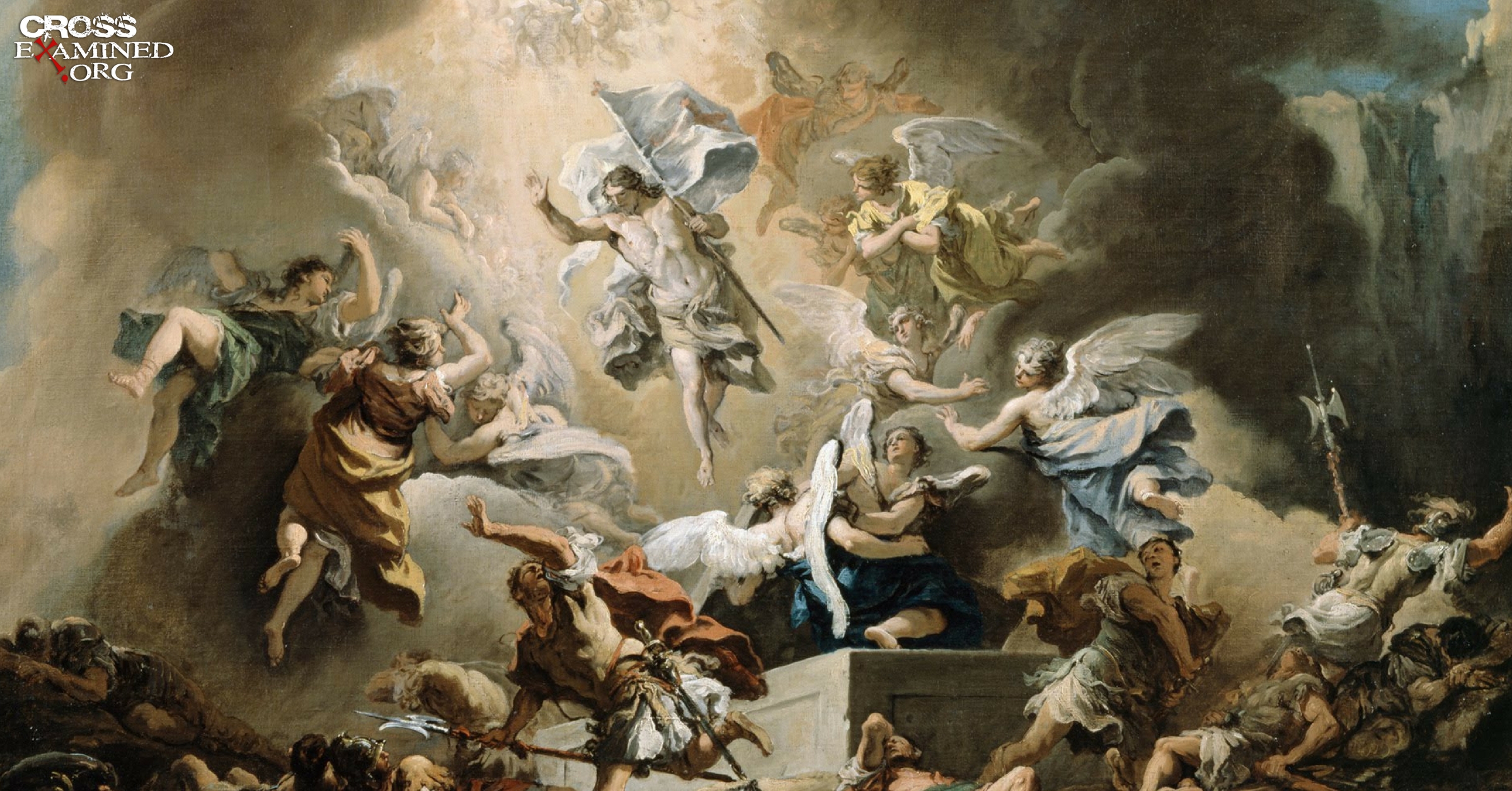Your Kids Need to Think Critically About the Resurrection… Because Secular Media Does Not
This month’s issue of Scientific American magazine features an article by atheist Michael Shermer entitled, “What Would It Take to Prove the Resurrection?” It’s boldly subtitled, “How to think about claims, even the Resurrection.”
Wow! This article in a popular magazine says it’s going to teach us how to think about the resurrection. I couldn’t wait to read it.
It was even worse than I thought it would be.
Every year at Easter time, secular publications feature articles on the resurrection, and every year they’re cringe-worthy.
In this post, I’ll highlight two key ways this particular article actually teaches bad critical thinking, then provide a three-point framework for helping your kids think more logically about the subject.
By the way, if you have time for Easter baskets, egg hunts and egg dying, you have time to have these conversations with your kids. Seriously. This is important.
Bad Thinking 1: Extraordinary Claims Require Extraordinary Evidence
Shermer stakes his argument against the resurrection on a favorite motto of skeptics: Extraordinary claims require extraordinary evidence.
If you haven’t heard this before, it’s a standard line skeptic throw out as an attempted conversation stopper. It’s meant to wave off any supposed evidence for a miracle as inadequate for demonstrating that something as improbable as a miracle actually occurred.
This idea that extraordinary claims require extraordinary evidence, however, falls squarely in the category of things that sound good but don’t hold up to logical scrutiny.
While much could be said here, the most important point is this: Why must extraordinary claims require extraordinary evidence? Extremely improbable—“extraordinary”—things happen every day, and ordinary evidence is often sufficient for demonstrating that they happened. It’s extraordinarily improbable, for example, that a terrorist attack would happen in a specific place at a specific time. But when investigators evaluate the scene, they look at perfectly ordinary evidence to determine what happened—security footage, weapons at the scene, and the word of eyewitnesses.
“Extraordinary claims require extraordinary evidence” is not a test we apply in any other area of life. Skeptics use it to subjectively set the evidential bar for miracles so high that no miracle could ever be believed.
That’s not critical thinking…that’s simply maintaining one’s presupposition that miracles don’t happen.
Bad Thinking 2: Proposing Explanations Without Considering Evidence
After saying that extraordinary claims require extraordinary evidence, one might expect Shermer to lay out the evidence for the resurrection and demonstrate how that evidence fails to meet his (extraordinary) standard.
He does not.
Without considering any evidence for the resurrection, he simply lists possible reasons the Bible would even report such a thing:
Maybe the eyewitnesses were “superstitious or credulous and saw what they wanted to see.”
Maybe they reported, “only feeling Jesus in ‘spirit’ and over the decades their testimony was altered to suggest they saw Jesus in the flesh.”
Maybe accounts of the resurrection “never appeared in the original gospels are were added later.”
Each of these hypotheses can be strongly refuted, but because I want to focus on Shermer’s proposed method of thinking and not his specific hypotheses, I won’t go into that now. Instead, I want to simply point out that rather than look at historical data and consider what hypotheses best explain the historical facts, he looks at no evidence, lists three hypotheses anyway, then concludes any of these is necessarily more likely than the resurrection…because they don’t involve miracles.
So, to recap, a popular and well-regarded magazine has suggested that the way we should think about a claim like the resurrection is to:
- Identify it as a miracle claim.
- Accept that any natural explanation is more probable than a miracle explanation.
- Reject the miracle claim.
In other words, we’ve just been taught that the way to think about miracles is to assume they aren’t possible. Brilliant!
Sorry, Scientific American, but I’m not impressed.
Please Teach Your Kids to Think More Critically Than This
Parents, we need to do better than this. Our kids need to learn to think more critically than the world around them because they will encounter this kind of poor thinking everywhere. And I assure you they won’t learn this in Sunday School, so the responsibility falls to you. Here’s a 3-point “miracle evaluation” framework every kid should understand. (I talk about this subject in multiple chapters of Keeping Your Kids on God’s Side, so I’ll reference those chapters for each point if you want to read more.)
- Are miracles possible?
Shermer, and many skeptics like him, simply presuppose supernatural miracles aren’t possible. They effectively say, “Miracles aren’t possible, so the resurrection didn’t happen.”
Circular logic is not good logic.
Here’s better logic to learn: The possibility of miracles depends on whether or not God exists.
If God exists, supernatural miracles are possible because the supernatural exists. If God does not exist, the natural world is all there is, and supernatural miracles are therefore impossible by definition.
- What are the facts surrounding a given miracle claim?
Unless you’re simply throwing out the possibility of miracles because of your prior commitment to atheism, miracle claims must be investigated on a claim-by-claim basis.
In the case of the resurrection, there are four facts that are so strongly attested historically that they are granted by nearly every scholar who studies the subject, including the skeptical ones. Drs. Gary Habermas and Michael Licona lay these out in their book, The Case for the Resurrection of Jesus. Because this is a blog post and not a book, I’m only going to explain each fact briefly. See Habermas’ and Licona’s book for a comprehensive discussion, or chapter 21 in Keeping Your Kids on God’s Side for a summary.
- Jesus died by crucifixion.
Jesus’ crucifixion is referenced by several non-Christian historical sources, including Josephus, Tacitus, Lucian of Samosata, and the Jewish Talmud.
- Jesus’ disciples believed He arose and appeared to them.
Habermas explains, “There is a virtual consensus among scholars who study Jesus’ resurrection that, subsequent to Jesus’ death by crucifixion, his disciples really believed that he appeared to them risen from the dead. This conclusion has been reached by data that suggest that 1) the disciples themselves claimed that the risen Jesus had appeared to them, and 2) subsequent to Jesus’ death by crucifixion his disciples were radically transformed from fearful, cowering individuals who denied and abandoned him at his arrest and execution into bold proclaimers of the gospel of the risen Lord.”
A skeptic may claim there are natural (as opposed to supernatural) explanations for what happened to the disciples, but very few deny the disciples experienced something that led them to willingly face severe persecution and death.
- The church persecutor Paul was suddenly changed.
Paul seriously persecuted the early church (Acts 8:3; 1 Corinthians 15:9; Galatians 1:13; Philippians 3:6). But everything changed when he had an experience with whom he claimed was the risen Jesus (Acts 9). After that experience, he converted to the Christian faith and tirelessly preached Jesus’ resurrection, eventually being martyred for his claims.
- The skeptic James, the brother of Jesus, was suddenly changed.
James was not a believer in Jesus during Jesus’ ministry (Mark 3:21,31; 6:3-4; John 7:5). However, 1 Corinthians 15:7 says Jesus appeared to James, and after this alleged resurrection, James was described as a leader of the church (Acts 15:12-21; Galatians 1:19). He, too, was martyred for this belief, as recorded by both Christian and non-Christian historical writings (Hegesippus, Clement of Alexandria, and Josephus).
Again, these are the facts that virtually all scholars agree on…facts which require explanation and facts which weren’t even considered by Shermer.
- What is the best explanation for the facts?
In chapter 22 of Keeping Your Kids on God’s Side, I lay out seven theories people have offered to explain these facts:
- Jesus only appeared to die.
- The disciples lied or stole Jesus’ body.
- Someone other than the disciples stole Jesus’ body.
- Witnesses went to the wrong tomb.
- The people who saw Jesus were hallucinating.
- People invented Christianity based on pagan myths.
- As Jesus’ teachings spread, they were embellished with supernatural details.
As I show in the book, not one of these explanations fits all of the known historical facts. A supernatural resurrection, however, easily accounts for them.
There’s good historical reason to conclude that a supernatural resurrection is the best explanation of the facts if you don’t have a prior commitment to atheism.
As theologian Wolfhart Pannenberg concludes, “The historical solidity of the Christian witness [to the resurrection] poses a considerable challenge to the conception of reality that is taken for granted by modern secular history. There are good and even superior reasons for claiming that the resurrection of Jesus was a historical event, and consequently, the Lord himself is a living reality. And yet there is the innumerable repeated experience that in the world the dead do not rise again. As long as this is the case, the Christian affirmation of Jesus’ resurrection will remain a debated issue, in spite of all sound historical argument to its historicity.”
I don’t expect Scientific American to come to the conclusion that a supernatural resurrection best fits the historical facts because it’s a secular publication. But I would challenge them in the future to present a more thoughtful approach to considering such issues.
I won’t hold my breath for that to happen.
In the meantime, if Christian parents spent as much time talking about these issues as dying Easter eggs, it might not be as much of a concern.
Can we make that happen?
Natasha Crain runs her Christian apologetics blog for parents, ChristianMomThoughts.com. She obtained her MBA in Marketing and Statistics from UCLA and obtained a Christian apologetic certificate from the University of Biola. She currently resides in California with her husband Bryan along with her three young children.
Original Blog Source: http://bit.ly/2G9wWEj












Leave a Reply
Want to join the discussion?Feel free to contribute!